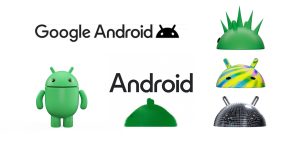
We are about two weeks away from this year’s Mobile World Congress, which means we are entering the first of the two big periods of the year where all the major OEMs refresh their lineup of high-end devices. On February 21st, just a day before MWC kicks off, Samsung is expected to announce both the Galaxy S7 and the Galaxy S7 Edge.
Unlike last year, where the edge variant was simply a curved version of the 5.1-inch screened flat sibling, this year’s model should bump up the panel size to 5.5-inches, making it closer to the Galaxy S6 edge+, which made its way to the store shelves alongside the Note 5 later last September…
For the South Korean giant, 2015 marked an important step in their product pipeline’s management, streamlining the sheer number of models brought to market and most of all focusing more heavily on quality, thus overhauling the design of its Galaxy S flagship lineup and wiping off most of the age old complaints about the poor use of materials and the general lack of attention to detail.
There’s no denying that a company with Samsung’s resources and experience does have the all the necessary resources to come up with something spectacular, and for the most part the Galaxy S6 delivered. It would have been praised regardless of its past, but the fact that such a beautiful product was coming from the same company that struggled to excite just twelve months earlier spelled change. And that was something that the firm was in dire need of.

Despite not being officially out there, the Galaxy S7 is shaping up to be a monster. A quick rundown of its specs alone reminds us that we are dealing with a metal-and-glass sandwich powered by either Qualcomm’s best system-on-a-chip, the Snapdragon 820, or the latest iteration of Samsung’s own Exynos chips. There’s also 4GB of RAM, a minimum of 32GB of onboard storage (rumored to be expandable via the return of microSD support), a QHD AMOLED panel (purportedly offering an ‘Always On’ mode), an improved fingerprint scanner (again embedded in the home button), a 12MP camera with f/1.7 aperture, a whopping 3,000mAh battery (3,600 on the edge model), IP certification for waterproofing, and possibly even a “ClearForce” pressure-sensitive display.
Awesome.
On paper, it almost looks like a dream (save, according to leaked press renders apparent lack of USB-C, despite previous WSJ reports), merging an impressive mix of the latest and greatest in terms of technologies with a stunning design and a series of fixes to the Galaxy S6’s shortcomings.
Looking at the situation a tad closer, however, a number of questions arise.
First of all, naturally, is the software: how is this iteration of TouchWiz going to be? How much bloatware are we going to have to deal with, and what kind of impact will it have on performance, given that Samsung’s track record does not give us much hope in that sense?
It is rare to find an enthusiastic fan of skinned versions of Android, and despite the huge, Material Design-led facelift brought last year, Samsung still struggles to deliver a compelling software experience. And while we remain hopeful, there is not a clear sign that tells us that the Galaxy S7 will drastically improve on that.
And, of course, that brings us straight to the second question, another problem of old: can we expect software updates to come in a more timely manner? With last year’s OS’ lightening, we may have had reason to expect a faster upgrade cycle to older devices, while instead, to this day, even the top devices are still stuck on Lollipop, months and months after the official Marshmallow release. Is there any chance this might change with the S7s? Hardly so.
If this supposed ‘pressure-sensitive’ panel were to be adopted, how would it be implemented in the software? We know Apple’s 3D Touch is deeply integrated within iOS, and developers can (and do) take advantage of it, making it an extremely interesting concept. Samsung’s execution would have to be integrated within TouchWiz alone (and not Android), giving users 3D Touch-like features in its own apps and a few parts of the system here and there. Sure, it could come in handy, but its very nature would probably make it a half-baked job, one where the most important aspect — third party apps — is left out.
This point, perhaps, albeit being entirely speculative, may sum up the argument at its core: can a ‘perfected’ Galaxy S6 be enough?

As always, there is no clear cut answer, but depending on who you may ask this question to, the response may vary greatly.
For those upgrading from an older phone, the S7 is presumably going to be a great device, even excellent for the most part. Reviewers will probably like it as well, and knowing TouchWiz’s usual annoyances they will likely praise all the improvements Samsung will undoubtedly make.
The market may respond positively as well, giving Samsung room to breathe amidst the numerous battles with Apple at the top and various Chinese OEMs in the lower segments of the market in particular.
In short, a whole lot of people, whose primary demand is to have a compelling, feature-filled and overall solid smartphone, will probably say that yes, the Galaxy S7 is good enough, and perhaps even more.
 Technology fans and enthusiasts like me — and, more generally speaking, all those who want our devices to be a little more than just tools — however, dealing with an increasingly saturated market and a general struggle with innovation following the end of the specs’ war, may be left wondering what to do of such a device. This is an argument which might be extended to other flagships, such as the LG G5 and, perhaps more notably, the HTC One M10, whose shoulders have to bear a much heavier weight.
Technology fans and enthusiasts like me — and, more generally speaking, all those who want our devices to be a little more than just tools — however, dealing with an increasingly saturated market and a general struggle with innovation following the end of the specs’ war, may be left wondering what to do of such a device. This is an argument which might be extended to other flagships, such as the LG G5 and, perhaps more notably, the HTC One M10, whose shoulders have to bear a much heavier weight.
For me, personally, the answer is no.
With good phones becoming cheap and cheap phones becoming good, I find it increasingly hard to shell out the premium price requested by Samsung for a series of undoubtedly useful but essentially extra features (like, for instance, wireless charging or waterproofing), a selection of quality materials and a superior camera, while still dealing with wearying, long-standing issues such as those regarding software.
The question then becomes: is it too much to ask for a standout feature, or at least something that — like 3D Touch on iOS — may eventually become second nature and intuitive? Something that actually justifies the extra money?
One of Android’s biggest struggles lies in the fact that OEMs can’t work on system-wide features (and thus allow third party developers to make use of relevant APIs in their apps), and on the other side Google has not yet put much effort in creating hardware specifically built with particular software features in mind. Indeed, this makes it really hard even for Samsung — still the largest Android handsets’ manufacturer — to lead the way in certain areas. And that may eventually become more and more of a problem, even from a financial point of view, as the reasons to upgrade to the latest iteration of a flagship diminish.
A Google looking forward to regaining more control over its own Nexus program may be a good sign, but for the time being it’s deep-pocketed OEMs like Samsung that we should look up to for meaningful innovation, and while the process of honing may end up giving us a pair of fantastic devices, their lack of genuinely future-proof equipment may leave both in the dust within months, when more up-to-date internals are available and the newest arrival cannibalizes its predecessor.
With a looming Internet of Things and a general process of digitalization of our lives, the smartphone is arguably going to be more and more of a crucial piece, which would lead us to believe that all the big companies certainly do have a long term vision of their evolution. Worldwide adoption, however, still probably ranks higher in their list of priorities, which is why this evolutionary process is unquestionably slowing down.
How this change is going to be driven is still unclear, as is the player whose moves are going to reshape the way we think of our main digital device. Like Samsung’s own old marketing campaign, however, we just hope for the next big thing to come soon.
FTC: We use income earning auto affiliate links. More.



Comments